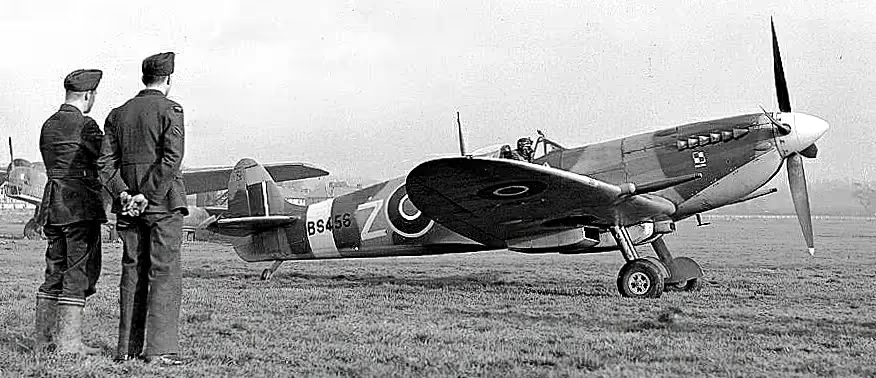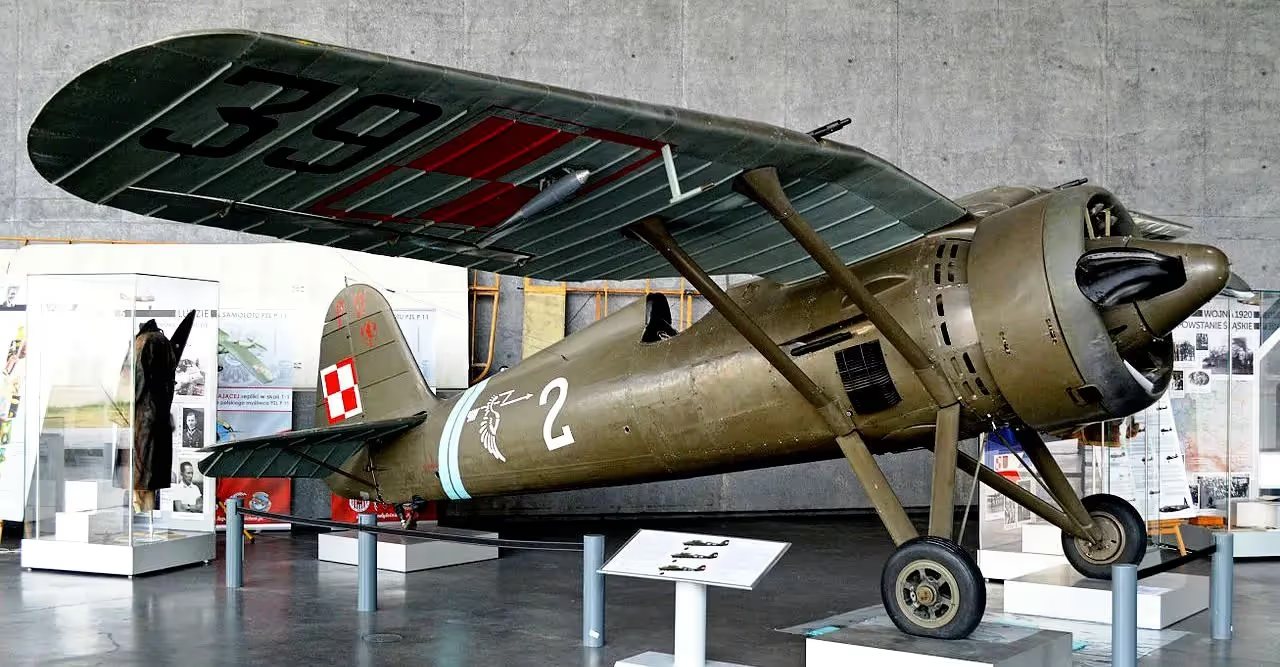Poland: Warplanes of the Second World War preserved
Warplanes of the Second World War preserved in Poland
The aim of this website is to locate, identify and document Warplanes from the Second World War preserved in Poland. Many contributors have assisted in the hunt for these aircraft to provide and update the data on this website. Photos are as credited. Any errors found here are by the author, and any additions, corrections or amendments to this list of Warplane Survivors of the Second World War in Poland would be most welcome and may be e-mailed to the author at [email protected].
Samoloty bojowe z II wojny światowej zachowane w Polsce
Celem tej strony jest zlokalizowanie, zidentyfikowanie i udokumentowanie samolotów bojowych z II wojny światowej zachowanych w Polsce. Wielu współpracowników pomagało w polowaniu na te samoloty, dostarczając i aktualizując dane na tej stronie. Zdjęcia są zgodne z zapisami. Wszelkie znalezione tutaj błędy są autorstwa autora, a wszelkie uzupełnienia, poprawki lub poprawki do tej listy Warplane Survivors of the Second World War in Poland byłyby mile widziane i można je przesłać e-mailem do autora na adres [email protected].
Warplanes of the Second World War preserved in Poland by aircraft type, serial number, registration number and location:

(RAF Photo)
Supermarine Spitfire Mk. IXb, RAF No. 306 (Polish) Squadron, Northolt, UK, 1943. No. 303 Squadron Warsaw-Kosciusco.

(Polish official photographer Photo)
Flying Officer Boles?aw Henryk Drobi?ski of RAF No. 303 (Polish) Squadron in the cockpit of his Spitfire, 29 Aug 1942.

(IWM Photo, TR 1008)
An Advanced Servicing Unit dismantles Supermarine Spitfire Mk. IX (Serial No. EN459), ZX-1, of the Polish Fighting Team, attached to RAF No. 145 Squadron in Tunisia. The aircraft was damaged on 6 April 1943 when, after shooting down a Messerschmitt Bf 109, it was attacked by another Bf 109 and hit in the engine. The pilot, Flight Lieutenant Eugeniusz Horbaczewski, was able to glide in to Gabes for a forced landing.

(IWM Photo, CH 5506)
An armourer of No 303 Polish Fighter Squadron RAF replenishes the 20-mm cannon of a Supermarine Spitfire Mark VB, during a gun-test in front of the firing butts at Northolt, Middlesex, 10 April 1942.


(Alan Wilson Photo)

(Mamik fotopolska.eu Photo)


(Andrzej Otrebski Photos)

(Jacob "Flyz1" Maciejewski Photo)
Supermarine Spitfire LF Mk. XVIe (Serial No. SM411), c/n CBAF.IX3495. This aircraft was assigned to RCAF No. 421 Sqn in 1944. It is currently on display in the Polish Aviation Museum, Kraków. It is painted as (Serial No. TB995), ZF-O, of RAF No. 308 (City of Kraków) Sqn in 1945, one of many Polish Squadrons operating within the RAF during the Second World War. After being preserved at RAF Wattisham between 1955 & 1967, it was one of many Spitfires gathered at Henlow for the production of the Battle of Britain film. Not airworthy at the time, it was used in taxiing scenes. It then served as a traveling exhibit before being sent from the United Kingdom to Poland in 1977 as part of an exchange between the Polish Aviation Museum at , Kraków, and the Royal Air Force Museum. It was exchanged for a First World War Airco DH.9A bomber (Serial No. F1010), the only survivor of its type, which is now on display at the Royal Air Force Museum at Hendon in London. Difficulties caused by the then ongoing Cold War meant nearly nine years were spent negotiating the swap. On display in the new entrance building at the Muzeum Lotnictwa Polskiego Krakow, Poland.

(Alan Wilson Photo)
Avia B.33 (Serial No. 4), 29, c/n B33-3061. Muzeum Lotnictwa Polskiego Krakow, Poland.

(Alan Wilson Photo)
Bücker Bü131B Jungmann (Serial No. SP-AFO), c/n 13113. Muzeum Lotnictwa Polskiego Krakow, Poland.


(Alan Wilson Photo)
Cessna UC-78 Bobcat (Serial No. 43-31827), c/n 5765, (SP-GLC). Built for the USAAF, the UC?78 derivative of the Cessna Bobcat served as an executive and training aircraft. After the end of the Second World War, large numbers of these aircraft were sold to many countries as war surplus. Poland bought 21, all of which came from wartime production. Fourteen were brought to operational status, and the reminder served as a reserve of spare parts. LOT Polish Airlines utilised Cessna Bobcats until 1949. Then, the sole remaining aircraft, Reg. No. SP-LEM, was handed over to the Aviation Institute, where it was re-registered as SP-GLC and used until 1962. In June 1953, two record-setting parachute jumps from altitudes of 4600 m and 4800 m were made from this aircraft. SP-GLC owed its long lifespan to the cannibalisation of other aircraft of the type. To immortalise this fact, "shark's jaws" were painted on the nose of the aeroplane. After signing off service in 1967, SP?GLC was donated to the Museum. It is displayed in the colours and markings of the Aviation Institute. Muzeum Lotnictwa Polskiego Krakow, Poland.

(Alan Wilson Photo)
Curtiss Hawk II (D-IRIK). This was an export variant of the F11C-2 Goshawk which saw U.S.Navy service. This is one of two supplied to Germany. "Though not interested in politics, WW1 ace Ernst Udet joined the Nazi party in 1933 when Hermann Göring promised to buy him two new Curtiss Hawk IIs (D-3165 and D-IRIK). The aircraft were used for evaluation purposes and thus indirectly influenced the German idea of dive bombers, such as the Junkers Ju 87 (Stuka). Udet used D-IRIK (c/n H.81) in aerobatic exhibitions held during the 1936 Summer Olympics, the aircraft survived the war, was eventually found in a field outside Kraków." It has now been restored and is on display in the new entrance building at the Muzeum Lotnictwa Polskiego Kraków, Poland.

(Alan Wilson Photo)
de Havilland DH.82A Tiger Moth (Serial No. T8209), 10. Officially listed as c/n 86514, which had an RAF serial of 'NM206', and was civil registered as F-BCGQ, however this is known to have been exported to the USA as N206DH. This machine is possibly ex-Belgian and is displayed as 'T8209', a machine operated by No.25 (Polish) Elementary Flying Training School based at Hucknall in June 1941. It is on display in the main display hangar at the Muzeum Lotnictwa Polskiego Krakow, Poland.


(Alan Wilson Photos)
Lisunov Li-2 (Serial No. 027), c/n 18439102 This aircraft is a Russian built copy of the Douglas C-47 Dakota, flown as a Polish Air Force bombing trainer.



(Alan Wilson Photos)
Amiot AAC.1, which is a French built Junkers Ju 52/3m. Built in 1946, this aircraft flew with the French Air Force and later with Portugal. It is now in German Second World War markings representing a Ju 52 of 1/KGrzbV 9, a transport unit operating on the Eastern Front in 1942. Both aircraft are on outside display at the Muzeum Lotnictwa Polskiego. Krakow, Poland.
Messerschitt Bf 109E-3 (Wk. Nr. 1185), ex-Bf 109 E-6, Lotnictwa Astronautyki Museum, Krakow.

(Jacob "Flyz1" Maciejewski Photo)

(Andrzej Otrebski Photo)
Messerschmitt Bf 109G-6 (Wk. Nr. 163306), ex-RQ + DR, ex-JGr. West "Red 3", crashed 28 May 1944, Fundacja Polskie Or?y, Muzeum Lotnictwa Polskiego, Warszaw.

(Luftwaffe Photo, ca 1939)


(Alan Wilson Photo)
Messerschmitt Me 209V-1, c/n 1185, D-INJR. This aircraft held the world air speed record from 1939 to 1941, and for a piston engined aircraft from 1939 to 1969. During the war it became part of Hermann Göring's personal collection. The fuselage is now displayed in a building full of unrestored relics at the Muzeum Lotnictwa Polskiego. Krakow, Poland.

(Alan Wilson Photo)
Piper L-4A Cub (Serial No. 43-29233), c/n 10524, built in 1943, Reg. No. SP-AFP. Muzeum Lotnictwa Polskiego Krakow, Poland.

(Alan Wilson Photo)
PZL P.11c (Serial No. 8.63), c/n 562, 39 - 2. This is the sole surviving fighter from the Polish Air Force of 1939. The P.11c was the main production variant of the 325 built. It is now on display in the Muzeum Lotnictwa Polskiego. Krakow, Poland. Fifty of the P.11a, were produced for the Polish Air Force and fifty of the P.11b (powered with the Gnome-Rhone 9K engine) for export to Romania. The PZL P.11c, was in service with the Polish Air Force in September 1939. This aircraft flew with the 121st Flight of the 2nd Air Regiment in Krakow. It is the only Polish fighter saved from the September 1939 campaign.

(Alan Wilson Photo)
North American T-6G Texan, c/n 182-415. Built as an AT-6C (Serial No. 41-32508'), it was later rebuilt as a T-6G (Serial No. 51-14728). It served with the French Air Force (Serial No. 114728). On display (in false markings) in the main display hangar at the Muzeum Lotnictwa Polskiego Krakow, Poland

(Alan Wilson Photo)
PWS-26, c/n 81-123. Luftwaffe coded VG+AS. This is the only survivor. It was captured by the Germans in September 1939. The aircraft was found in Poland after the war and used until 1953 by civilian operators with the (Serial No. SP-AJB).


(Alan Wilson Photo)
Tupolev Tu-2S, Muzeum Lotnictwa Polskiego Krakow, Poland





